
Beyond Geek Series Previews
Beyond Geek Series Previews Previews Season 2 Season 2 Episodes Kinetic Sculpture Racing Kinetic Sculpture Racing 2 The Force is Strong Hackathon A Pirate’s Life
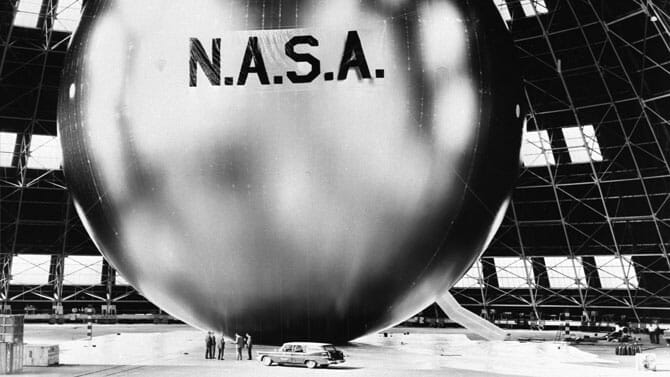
by Sage Michael | Beyond Geek
If this were the 1940’s, you would already know about Bing Crosby, Louis Armstrong, and Tennessee Williams. Roosevelt might be your President, and Generals Eisenhower, Patton and MacArthur might even be your heroes. World War II might be thrust upon you, but then again so might the United Nations or the bikini. If this were the 1940’s you might even say that it was an interesting time to be alive. What you might not know, however, was that the great Space Race had already begun when a certain John Dewitt, Jr. did something that was clearly amazing—but more about this in a minute.
Fast-forward about 10 years.
It’s 1956 and William O’Sullivan has an idea. What if, he says, we float a balloon up into space and bounce radio signals off that? That would give us not only critical data about the atmosphere, but it would also give us a way to communicate across the entire world by bouncing our signals off of it and onto our receiving stations, and thus, Project Echo (as in bouncing radio waves) was born.
A genius idea, though it wasn’t the first time this idea had come about.
For that we have to look back to John Dewitt, Jr., a man so far ahead of his time that 10 years before O’Sullivan’s idea, he had already bounced radio signals to and from the Earth, but his was a bit more spectacular. That’s right, Dewitt bounced his signals directly off the moon itself paving the way for Radar Astronomy, space communications, and even the practice of naming space missions after Roman gods (Apollo, Mercury, etc.). Project Diana, as he called it (Diana being the Goddess of the Moon), was our first attempt to touch a celestial body but today the practice is so common with ham-radio operators that it is simply referred to as E.M.E. (Earth-Moon-Earth) or even, a “moon bounce.”
Okay, so if you’re not wowed enough, here is a bit of trivia for you: What country was the first to put a man-made object into space? Hint: It wasn’t the US, and it wasn’t the USSR. No, in point of fact it was Nazi Germany in 1944, a full 13 years before Sputnik and 2 years before Dewitt’s moon bounce. They did so with a V-2 rocket, over 3,000 of which they were able to launch before the rest of the world could even catch up with their own version of the space precedent!
Once that surprise has worn off, please… join me again in 1956 where we find William O’Sullivan attending an all-day meeting on the subject of what experiments scientists should put on their now-captured and rebuilt V-2s. Hearing nothing that seemed feasible to him for measuring air-density (something sorely needed for the future of space flight), he instead came up with the balloons in space idea about which we just spoke.
Balloons were smart, extremely feasible, less-expensive and even more practical than traditional satellites were thought to be. Eventually, and at great length, Project Echo was given the green light. The question now became one of execution.
From what would they be made and how would they survive the harsh realities of space flight? There were single-flight temperature ranges that ranged from +300-degrees Fahrenheit to –80-degrees with which to contend. One would also have to consider the lightness of a balloon vs. the strength it needed to confront the extremely high drag, high friction, and high winds found in orbits of hypersonic speeds. Those problems in fact were so fierce that even traditional satellites would burn up and disintegrate under the same circumstances that these balloons would have to face. How then a fragile balloon?
Obviously, they figured, the first step was simply to protect the balloons from as many of these factors as they could. Okay, so how do we do that? Well… let’s first launch them in a rocket and then only later, at an extremely high altitude, shall we release them into space. And this is how we came to the idea behind Project Shot-put. Shot-put was designed to launch Echo into space so that the unfolding and inflating could happen in a relatively safe and protected environment before burning itself up upon reentry—and Shot-put, by the way, worked perfectly.
Echo, unfortunately, did not—Instead… well. It popped.
But we are nothing if not tenacious. We went back to the drawing board myriad times before finally getting it right, and eventually we got it launched. What Dewitt had begun in the 40s and O’Sullivan had continued in the 50s had finally succeeded. The year of our great success was 1960. Echo went up—and thankfully, stayed up.
What had originally begun as just a balloon had grown and evolved to finally become a giant globe of ultra-thin plastic covered by a Mylar shell. It also grew larger and more-encompassing than a 13-story building, and it had all the right stuff to keep on delivering as promised until mid-1969—almost a decade after it went up! Not bad for a balloon.
“Great,” you say. “Now we’ve got a giant balloon floating lazily through space. Shiny.” In fact I used to say the exact same thing. But here’s the part that still gets me literally every time I think about it: Giant balloons in space don’t just float around lazily like the balloons do here on Earth. In space a balloon can reach speeds of up to Mach 24—that’s 18,000 miles-per-hour!
First, let it sink in just how fast that balloon is actually travelling. Second, realize that if it can hit speeds of Mach 24 with no fuel and no guidance systems, how incredible—how hands-down remarkable—is it that our scientists had figured out a way to literally turn an empty balloon into a ultra-high-speed, geosynchronously-orbiting, communications satellite that they could then track to within inches of its location. I don’t know about you, but I can’t track anything that travels at 18,000-mph to within inches. I would not even know where to begin.
Balloons had finally proven their worth in space and that’s a good thing, because it wouldn’t be long before we would need their service yet again.
But we’ll hear more about that in Part II.

Beyond Geek Series Previews Previews Season 2 Season 2 Episodes Kinetic Sculpture Racing Kinetic Sculpture Racing 2 The Force is Strong Hackathon A Pirate’s Life

Starship Valiant is a new web series in development at Starbase Studios and created by Michael L. King.
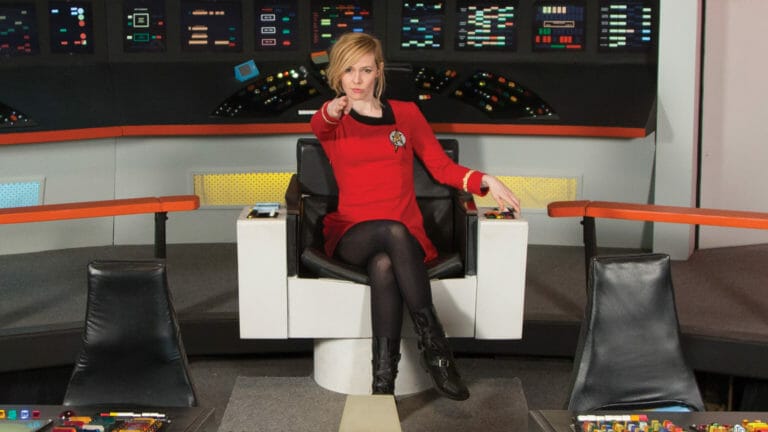
Brittni Barger journeys into the final frontier with some passionate fans that don’t just want to watch Star Trek, they want to create it as well.
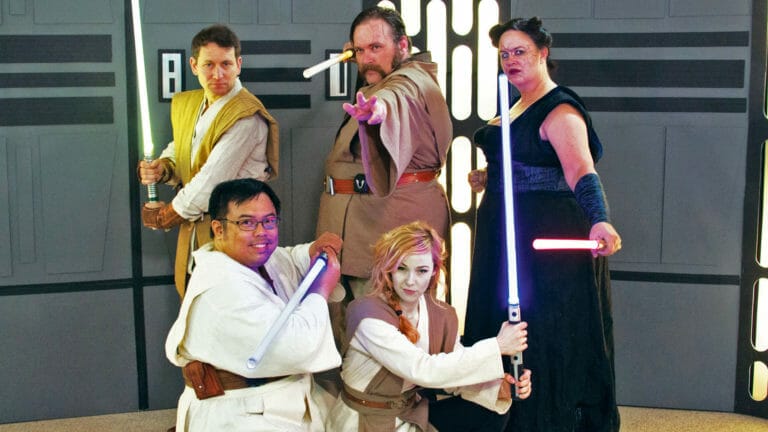
Brittni Barger learns the way of the Jedi with some highly dedicated Star Wars fans.

Extended interview with Lloyd Klein about what it was like being in the glider infantry during WW2.
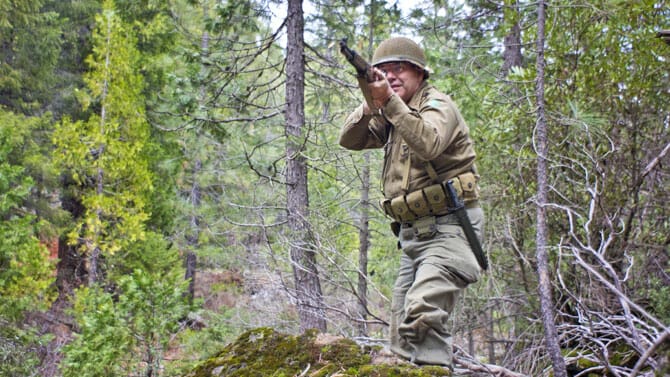
The Basics of Reenacting by Bruce Hrabak | Guest Contributor People reenact from Roman Times through the Civil War to the Vietnam era for various
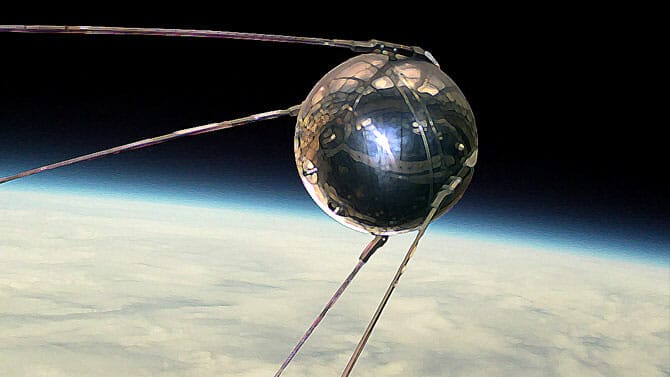
Okay, so where in our great history of space exploration shall we begin? Well… as in all great stories, perhaps it is best to start at the beginning.
In the beginning there was Sputnik.
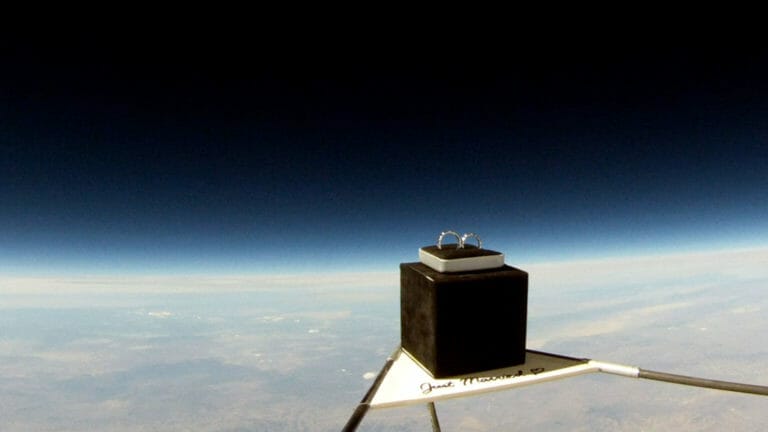
Deleted scene from “Floating to Space” episode
Subscribe to our newsletter for updates, giveaways, and other geek news
*By clicking on the button, you agree with Terms Of Use and Privacy Policy.
Subscribe to our newsletter for updates, giveaways, and other geek news
*By clicking on the button, you agree with Terms Of Use and Privacy Policy.
Subscribe to our newsletter for updates, giveaways, and other geek news
*By clicking on the button, you agree with Terms Of Use and Privacy Policy.